Growing Chinese cabbage: features and subtleties
Content:
About Peking cabbage, it is known that its homeland is China. And the time of its appearance is about five thousand years ago. Later she ended up in Asian countries (Korea, Japan, etc.). It appeared in European countries not so long ago, a little more than half a century ago, and found immense popularity here. Growing Chinese cabbage does not cause any particular difficulties for gardeners. And in America, Chinese cabbage is so fond of it that it is grown simply in huge industrial quantities.
Due to its rather pleasant taste, it is actively used in cooking. Raw - in salads, fried or stewed cabbage is used to prepare a huge number of dishes, and even send it to soups.
Fresh leaves also serve as a wonderful decoration for dishes, an interesting touch for any dish. For health, Chinese cabbage is a storehouse of vitamins and minerals, as well as a source of healthy fiber.
Growing Chinese cabbage
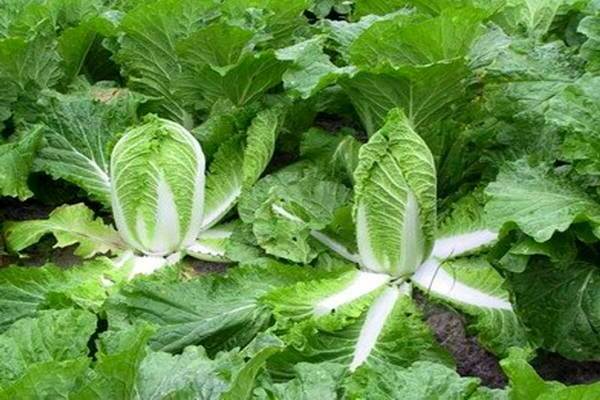
cultivation of Chinese cabbage
From Peking cabbage - this unpretentious vegetable crop - a couple of harvests can be expected during the warm season. The bonus is that growing Chinese cabbage does not present any difficulties, even for novice gardeners.
It is not capricious, easy to care for, grows quickly and is stored. It has a lot of useful properties and excellent taste.
Peking cabbage can be confused with cabbage or lettuce, but it still belongs to the cabbage family.
Her swings are not elastic, but elongated. With oblong and wrinkled light green leaves.
About the features in the cultivation of Peking cabbage
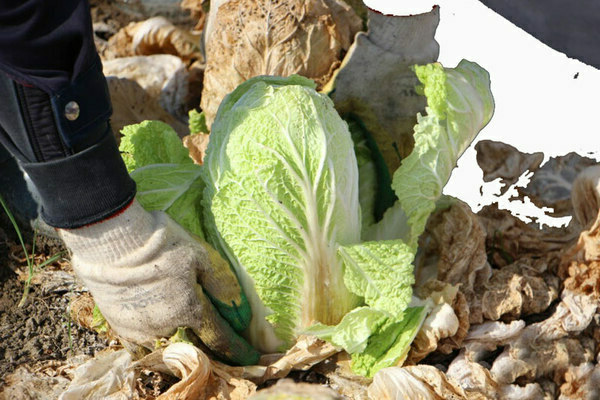
cultivation of Chinese cabbage
Another property of Peking cabbage was not mentioned - it is its early maturity. Early varieties become ripe after 1.5 months, mid-ripening ones - after 2 months, and late 2.5 or even 3 months.
A property of Chinese cabbage that cannot please gardeners is the common ability to form arrows with flowers from which seeds are obtained.
When a culture releases an arrow and blooms, then it loses its presentation and often - an exquisite taste.
How to prevent the shooting of Chinese cabbage? The secret here lies in the landing time (s). A culture gives arrows if it is planted during a long day of light.
That is, it is necessary to plant it around the middle of spring (or at the end of July, since this is the optimal time for planting, when the cabbage will not give arrows), when the daylight hours are not so long.
How best to plant - with seeds or seedlings? Growing Chinese cabbage in the open field
So, the cultivation of Peking cabbage is carried out using direct sowing of seeds in the ground or seedlings. That is, at home it is sown in containers, followed by planting in open soil.
Both methods work well. But one should take into account the fact that sowing Chinese cabbage seeds in open soil is best in the southern regions, and preparing seedlings in the central and northern regions.
We will start growing Chinese cabbage with the secrets of growing seedlings. To begin with, it should be said that it is sown twice a year.
The first time - in the middle of the first spring month (you can still after a couple of days). And the second - in the middle of the first summer (you can also a couple of days later).The second harvest has better storage.
It should be remembered that Peking cabbage does not tolerate picking well. And after planting in open ground, it takes a long time to get used to new conditions.
Therefore, a secret recommendation: it is better to sow seeds in peat pots, which then, without much difficulty and stress for the plant, will move into open soil. The peat base of the pots is safely decomposed in the ground. And the root systems of the planted culture are not injured. Plants thus take root better.
Mix for pots includes: completely rotted organic matter, turf soil, river sand and garden soil in equal proportions. It is good to add wood ash (0.5 kg per 10 kg of mixture). It is better to sow in moist soil, slightly burying the seeds.
Keep the pots with crops at room temperature (20-22 degrees), well - in a box covered with cling film.
For fast germination, before sowing, the seeds should be soaked with gauze and any growth regulator.

It is desirable that there are no fluctuations in air temperature, and the soil surface is moistened. Can be sprayed with a spray bottle. In no case should it dry out.
If these few rules are observed, shoots can be seen in 3-4 days. Immediately after this, the film is removed, and the sprouts are placed on the south side of your house.
The main thing in caring for sprouts of Chinese cabbage is watering, taking into account the moisture of the soil, and 12 hours of daylight hours. The LED lamp will help to make more light.
And now, after about a month, you see sprouts in front of you with well-developed 4-5 leaves. It's time to plant them in open soil.
You can arrange a workout for the plants and take them out for a couple of hours first on the balcony or veranda for hardening. Then double the stay in the fresh air.
Thus, gradually bring the residence time to a day. During this time, the plants will be hardened, they can be safely planted on a garden bed in open ground.
The garden must be prepared very carefully. It should be loose, with good lighting, without excess moisture (without any stagnation).
When choosing a place for a garden, pay attention to this: Peking cabbage grows well where onions, garlic, potatoes or carrots previously grew. But where there were crucifers, it is better not to plant it!
Is it possible to grow Chinese cabbage without using seedlings? To begin with, they prepare the soil, dig it thoroughly, breaking lumps, and loosen it. Of course, they are attentive to what has grown in this soil earlier.
After making sure that the beds have enough lighting. That no even the slightest shadow is foreseen here, they start sowing. Several holes or grooves are made. And with a slight deepening, each seed is laid.
After sowing, immediately watered with a watering can or a spray bottle with small holes.
An important addition: regardless of how - with seeds or seedlings, Chinese cabbage is planted, but the distance between the plants should be 0.35 m and 0.4 m between the rows.
If the day of planting turned out to be dry, then a short time after watering, “powder” the soil with wood or stove ash (or soot) to maximize moisture retention.
If the day of planting turned out to be cool or even the day before there were frosts, then the planting is covered with transparent polyethylene.
In the open field, seeds germinate about twice as long as in peat pots.
Chinese cabbage: cultivation and care
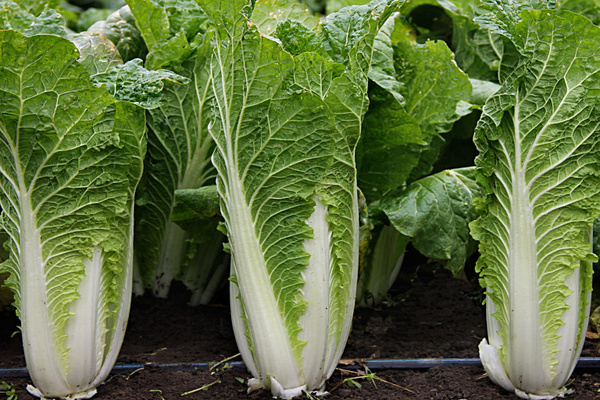
So, against the background of its relatively non-capricious nature, Peking cabbage prefers well-lit and humid growing areas. Dislikes long days and heat. It can even be argued with confidence that this culture loves cold summers (not lower than 16 and not higher than 20 degrees).
It is then that its leaves will be juicy and beautiful, and the heads of cabbage will be elastic. When the summer is too hot, the leaves become "burdocks". And when cold, Peking cabbage dies.
Non-woven covering material and wire arcs will help to transfer with dignity the anomalies of nature and protect the crop. With their help, plantings are covered. With the help of such a "greenhouse" the plant is saved from unforeseen pranks of nature.
In the rainy months, such a design will shelter the culture from excess moisture, warn against harmful putrefactive insects.
And in dry summers, the culture is often loosened, they do not allow the appearance of an earth crust on the surface, and weeds are destroyed in time. They are also removed after rain or watering. Since they are easily removed from wet soil with the entire root system.
And immediately the soil is mulched with wood ash, stove ash or soot (the approximate thickness of the mulch layer is 1 cm).
The soil is loosened and mulched after 30 days from the time of the first shoots. Or 21 days after transplanting.
Interestingly, this culture loves rainwater. Experienced gardeners put containers under the gutters, which are pre-painted with black paint. As a result, the water also warms up. Water every other day, but at least 1 rub / week (consumption - 3 l / m2).
How to fertilize correctly
Everything here is related to the timing of planting. If the Chinese cabbage was planted (or seeds were sown) on spring days, then three feedings are carried out. If in the summer, then two will be enough.
Usually a solution is made from nitroammofoska (1 tablespoon per 1 bucket of water) or all kinds of natural dressings. Approximate consumption - 2-3 liters / 1 m2.
For example, it is fertilized with a mullein (1:10), having previously allowed the solution to brew for up to two days before watering. Consumption - 2 l / 1 m2.
They also use bird droppings (1:20), having previously allowed the solution to brew for up to three days before watering. Consumption - 2 l / 1 m2.
Sometimes a weed tincture is used as a fertilizer. The culture is especially responsive to infusion of young nettle (1 kg per 1 bucket of water, leave for a week). Dilute with water (1: 2) before watering. Approximate consumption - 5 l / 1 m2.
To get dense ovaries, boric acid is used. In order to make a solution, take 1.5 g of boric acid, pour a bucket of water and leave for 24 hours. The prepared solution is used to treat the foliage with a spray bottle in the evening.
Chinese cabbage pests, who are they?
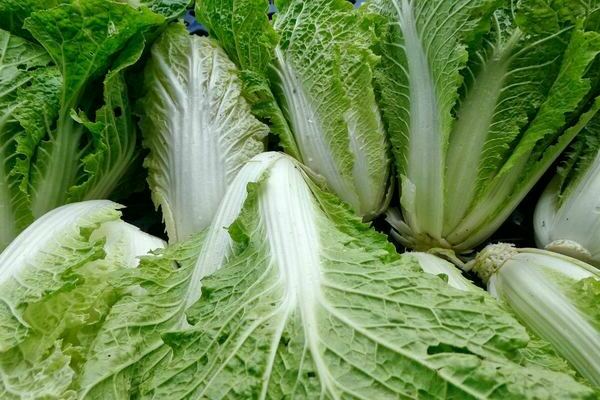
The nastiest of them are cruciferous fleas and slugs. Since Chinese cabbage is eaten fresh, and it ripens quickly enough, it is not recommended to process it with pesticides. The best option is to use folk remedies.
And most importantly, prevention:
1) Competent crop rotation (we use land for planting, where there were no crucifers).
2) Observe the landing time (see above).
3) We use covering devices that protect against harmful insects.
4) We use ash (wood or stove), or a lot of soot. Powder the ground with them at the time of emergence.
We must not forget to dig up the soil (we do not break the clods): then the frost will beat the harmful larvae.
A necessary preventive measure against harmful insects is a joint planting with crops such as cucumbers, tomatoes, onions and garlic.
If you still need to use an insecticide, then this should be done no later than 25 days before picking cabbage. But it is still better to first treat it with some biological preparation, for example, "Bitoxibacillin".
At night, the most slippery and fastest eater of Peking cabbage, the slug, can attack. This happens so quickly that it is impossible to immediately understand what happened to the kachanas. You can fight these slippery creatures in different ways. Let's talk only about the most popular methods.
1) Place planks, pieces of slate, plastic or roofing felt on the surface of the ground where the culture grows. Late at night, having already eaten enough, all these living creatures will seek refuge and hide under all your prepared plates.
In the morning, by opening the shelters, you can remove all accumulated pests.
2) An original and very effective option is to mix wood ash (300 g) and hot pepper (1 tablespoon).Sprinkle over heads of cabbage before rain or watering. For this recipe of struggle, one time is not enough, the procedure must be repeated.
3) Dilute ordinary pharmacy brilliant green (1 bottle) with water and water the culture (1 bucket / 5m2).
How to harvest and store Chinese cabbage
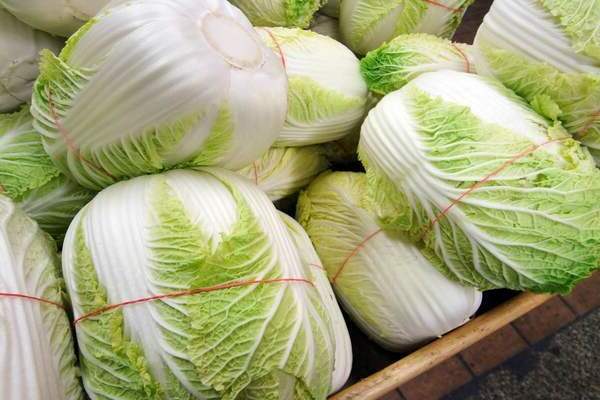
This culture is cold-resistant, can withstand temperatures up to -3 degrees. Therefore, the second crop is often harvested from mid-October to mid-November (depending on the region).
Cabbage planted in the spring months is harvested based on the density and maturity of a particular variety. They are removed by cutting off the swing.
As mentioned above, summer-planted Chinese cabbage is taken for storage. It will remain well at + 4 ... + 6 degrees and air humidity up to 85%.
Probably, many have seen that in stores this delicious product is sold wrapped in thin plastic. It is in such a film in the refrigerator that Chinese cabbage can be stored for a long time.
And cabbage, planted in the spring months, is used for food or processing.
About the varieties of Peking cabbage
In conclusion, let's talk about the novelties of this crop and point out the most famous seed-producing companies.
Early varieties include:
- Medalist from the Poisk agrofirm, the swing reaches up to 1.6 kg;
- Shanghai from Aelita agrofirm, reaches up to 1.3 kg;
- Sentyabrina from the "Sedek" agrofirm, reaches up to 1.1 kg;
- Miss China from the Sedek agricultural firm, reaches up to 1.0 kg;
- Spring beauty from the "Sedek" agricultural firm, reaches up to 2.0 kg;
- Autumn jade from the "Sedek" agricultural firm, reaches up to 2.9 kg;
- Naina from the "Sedek" agricultural firm, reaches up to 3.0 kg;
- Lyubasha from the Poisk agrofirm, reaches up to 2.1 kg.
The varieties of medium ripening include:
- Harbin from the agricultural firm "Gavrish", the head of cabbage reaches up to 1.8 kg;
- Aikido from the agricultural firm "Gavrish", the head of cabbage reaches up to 2.0 kg;
- Orange heart from the "SeDeK" agrofirm, reaches up to 1.5 kg;
- Pomegranate from the "SeDeK" agrofirm, reaches up to 2.3 kg;
- The autumn beauty from the "SeDeK" agrofirm reaches up to 2.4 kg.
Late varieties include:
Spring jade from the Sedek agricultural firm, the swing reaches up to 3.0 kg).

